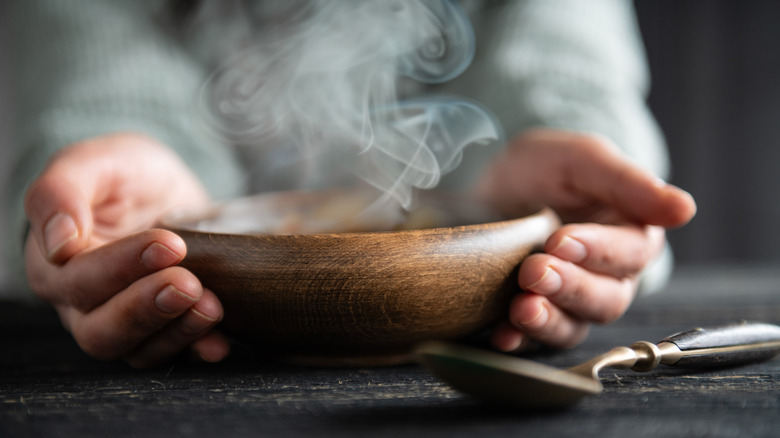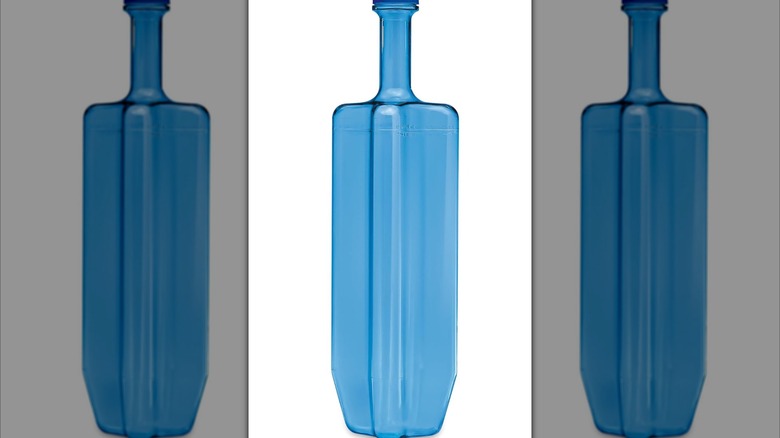The Overlooked Kitchen Tool That Makes Cooling Hot Soup Safer And Easier
We may receive a commission on purchases made from links.
Autumn and winter can mean only one thing for home cooks: It's soup season! Whether you like comforting chicken noodle, creamy clam chowder, or even a spicy bowl of tortilla soup, a pot of homemade goodness is one of the coziest treats you can make in the colder months. But while a hot bowl of soup is great when it's steaming, transferring it into a container can be tricky — or even potentially dangerous. Serving soup while it's boiling can scald your mouth as well. That's why cooling paddles are perfect for soup lovers. Although home cooks may not have heard of them, they're a great addition to your kitchen.
Cooling paddles, which sell online for $30 and up, are filled with ice (or water and then stored in the freezer, similar to an ice pack) and then placed into a pot of hot soup. Gently stirring with the paddle cools a boiling pot of soup quickly to a safe eating temperature. You can also use the tool to ensure the soup is cool enough to store in a container without risking plastic leaching or melting.
Tips for using cooling paddles
Surely, even with a cooling paddle at the ready, soup should be served piping hot, right? Soup temperature preferences vary from person to person, which is part of why cooling paddles are so useful. But be sure that you're using your cooling paddle properly, for both safety and maximum efficacy. It's important to fill your paddle with water and freeze it well before you intend to use it. You should also use a food thermometer to check your dish as you stir, ensuring the temperature stays even and doesn't drop to unsafe zones where bacteria can grow.
Even among hot soups, not all should be served at the same temperature. Some culinary experts recommend that clear, broth-based soups (like chicken noodle, Chinese-style egg drop, or beef with barley) be served hotter than thicker soups, like three-ingredient tomato soup, butternut squash soup, or northwestern-style fish chowder. Serving hot, thick soups makes it more challenging to taste the flavors, so you may need to use the cooling paddles longer to reach the ideal temperature.

